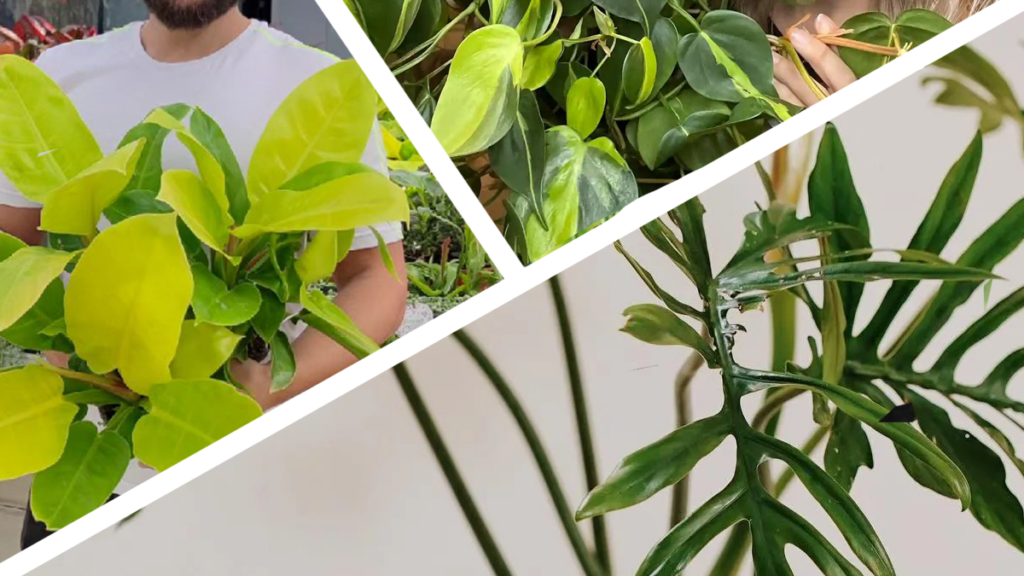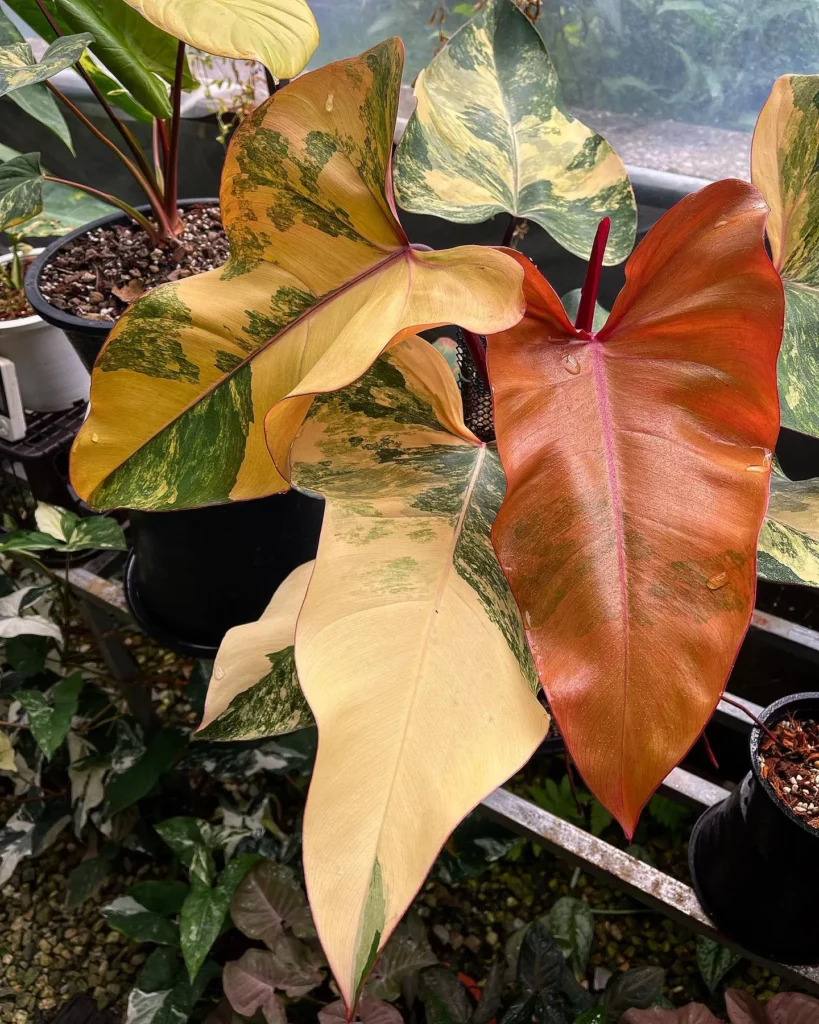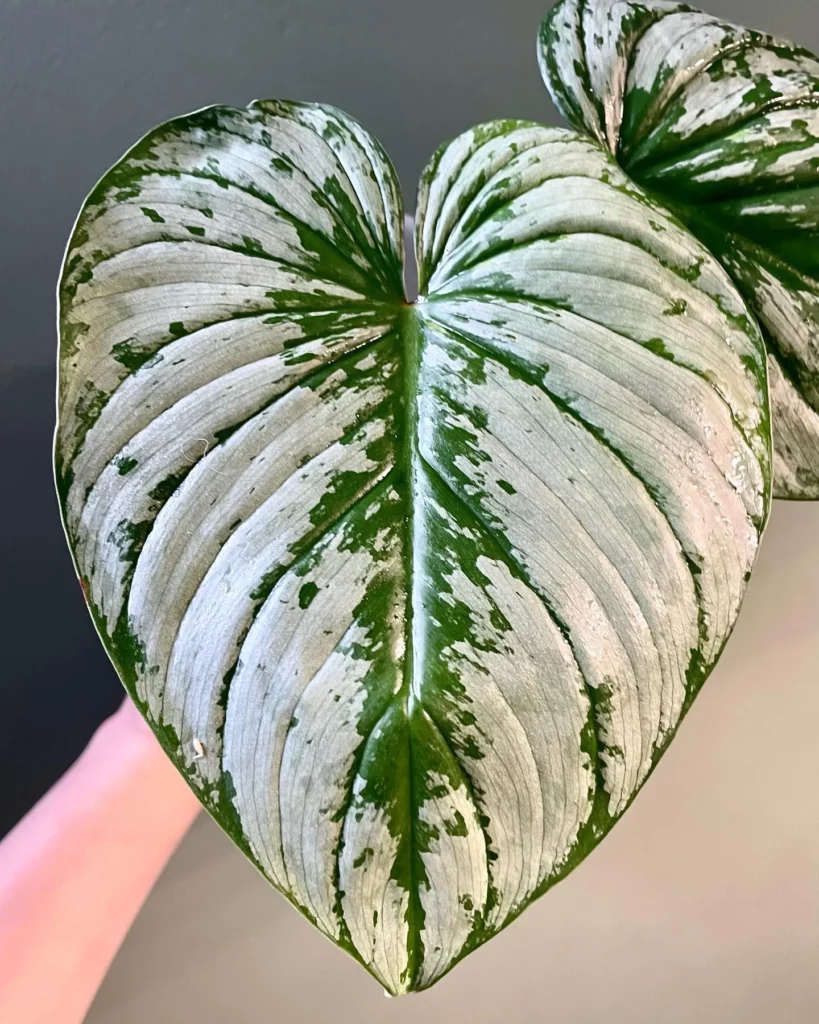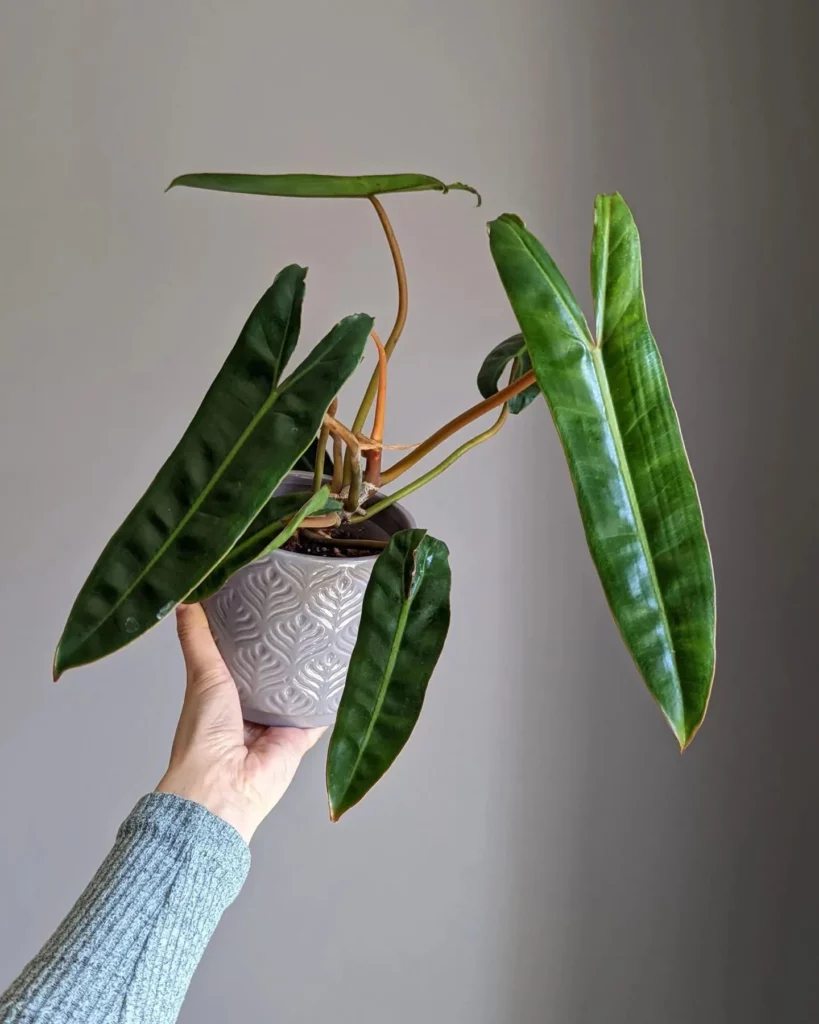Welcome to our guide on growing the beautiful Philodendron Birkin Splash! Whether you’re a seasoned plant parent or just starting your indoor garden, this stunning variegated plant is sure to add a touch of elegance to your space. With its dark green leaves adorned with striking pinstripes, the Philodendron Birkin Splash is a true showstopper.
Key Takeaways:
- Provide bright, indirect light for your Philodendron Birkin Splash
- Keep the soil moist but allow it to dry out between waterings
- Maintain a mild and slightly humid environment for optimal growth
- Regularly fertilize your plant with organic or water-soluble fertilizer
- Avoid overwatering to prevent root rot
Overview of Philodendron Birkin
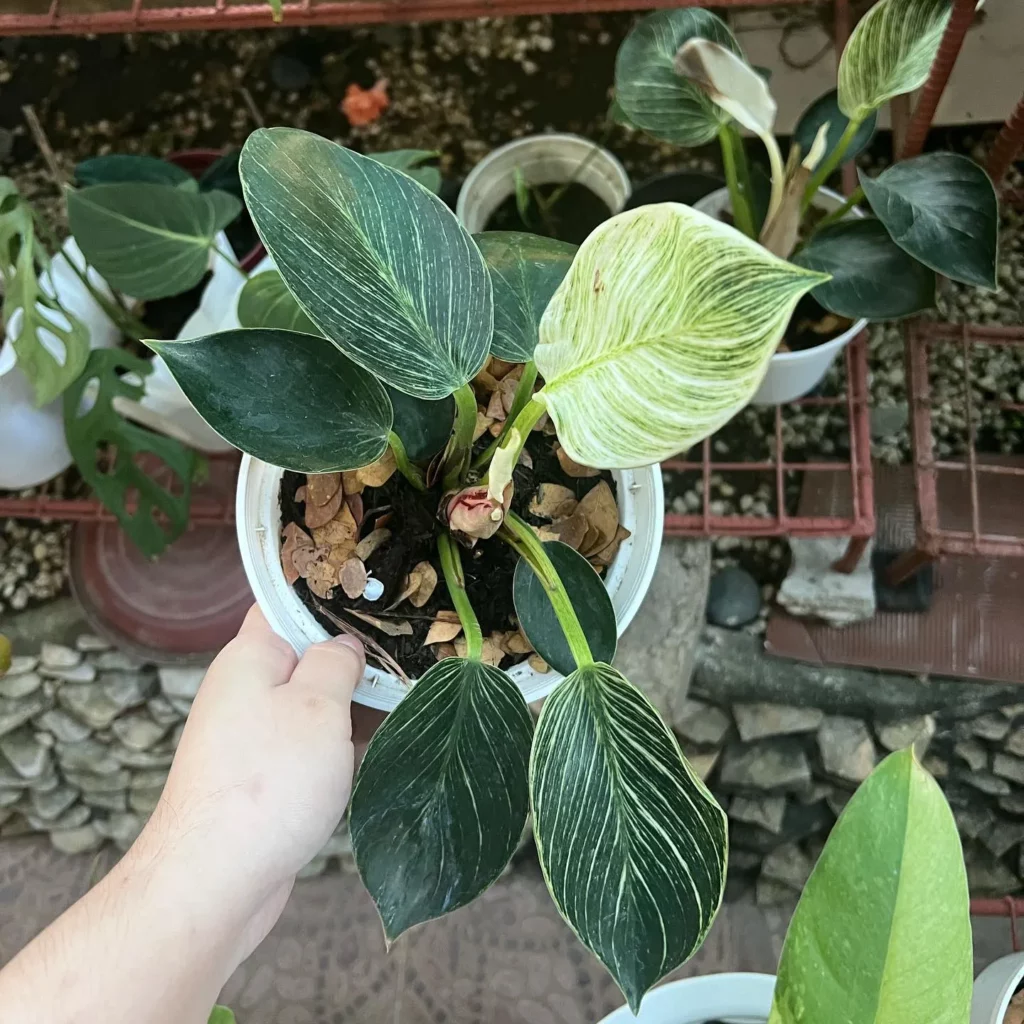


The Philodendron Birkin is a beautiful variegated cultivar that has gained popularity as an indoor houseplant. Originating from a mutation in the Philodendron Rojo Congo, it is often referred to as the ‘White Wave’. The leaves of the Philodendron Birkin are characterized by their dark green color and striking variegation, which can range from creamy white to completely white with pink accents.
Growing Philodendron Birkin



If you want to expand your collection of Philodendron Birkin, you’ll be glad to know that it is relatively easy to propagate this stunning plant. One popular method is through stem cuttings, which can be done in water or directly in soil.
To propagate Philodendron Birkin in water, simply cut a healthy stem below a leaf node and place it in a container filled with water. Make sure to remove any leaves that would be submerged in the water. Keep the container in a warm and bright location, away from direct sunlight. After about 6-8 weeks, you should start to see new roots developing. Once the roots are well-established, you can transfer the cutting to a pot with potting mix or plant it directly in soil.
If you prefer to propagate Philodendron Birkin directly in soil, the process is similar. Take a stem cutting below a leaf node and remove any leaves from the lower portion of the stem. Dip the end of the cutting in a rooting hormone to encourage root development. Plant the cutting in a pot filled with moist and well-draining potting mix, burying it about an inch deep. Keep the soil consistently moist, but not overly saturated. Place the pot in a warm and bright location, away from direct sunlight.
Philodendron Birkin Care



Proper care is essential to ensure the healthy growth and vibrant appearance of your Philodendron Birkin. Paying attention to soil, watering, light, and pruning will keep your plant thriving.
Soil
Philodendron Birkin prefers moist soil that drains well. To achieve this, use a standard potting mix with perlite. The addition of perlite improves drainage and prevents soil compaction, providing an ideal growing medium for your plant.
Watering
Water your Philodendron Birkin once a week, ensuring that the top inch of soil has dried out between waterings. Overwatering can lead to root rot and other problems, so it’s important to strike the right balance. Use your finger to check the moisture level in the soil before watering.
Light
This Philodendron variety thrives in bright, indirect sunlight. Place your plant in a well-lit area where it can receive around 12 hours of indirect light per day. Avoid exposing it to direct sunlight, as this can cause leaf burn.
Pruning
Pruning is generally not necessary for Philodendron Birkin unless there are dead or damaged leaves. However, if you wish to shape or control the size of your plant, you can prune the stems just above a node (the point where leaves emerge). Regular pruning will help maintain the plant’s overall shape and encourage new growth.
Fertilizing Philodendron Birkin


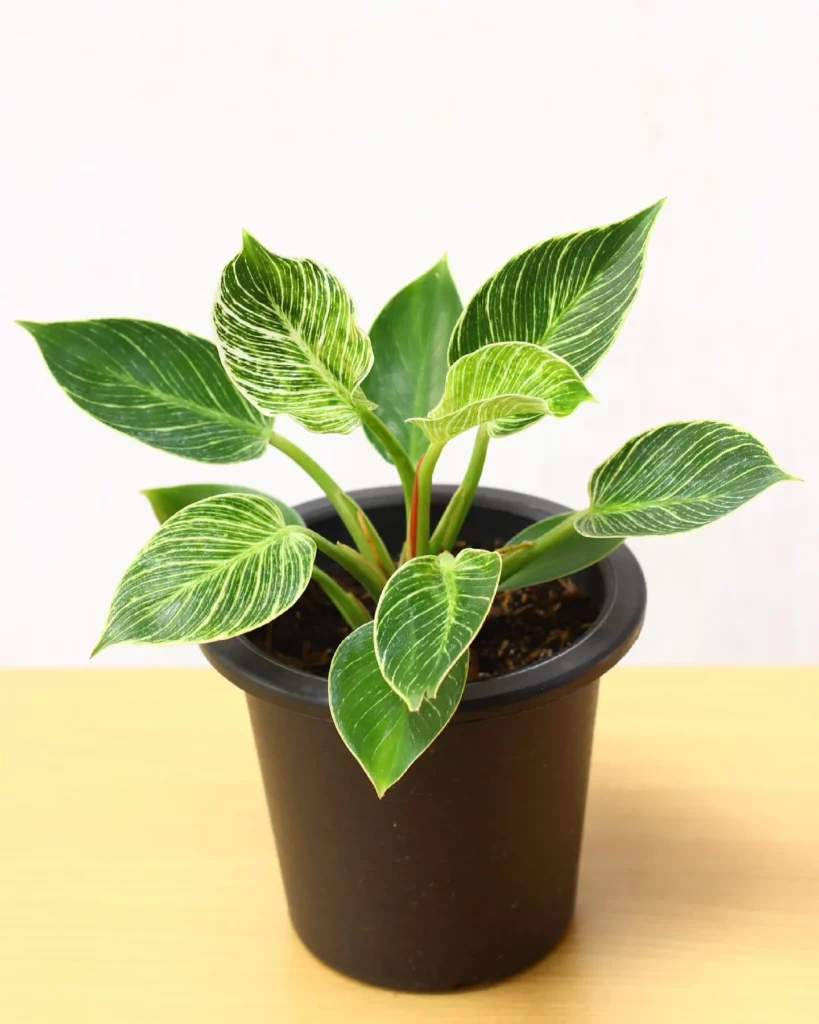
To ensure the healthy growth of your Philodendron Birkin, it is important to establish a regular fertilizing routine. Fertilize your Philodendron Birkin every 2-4 weeks during the spring and summer seasons. This will provide the plant with the necessary nutrients to thrive and maintain its beautiful foliage.
When selecting a fertilizer for your Philodendron Birkin, consider using organic options such as compost or water-soluble fertilizers. Organic fertilizers are gentle on the plant and promote overall soil health. Additionally, they help in retaining moisture in the soil, which is beneficial for the Philodendron Birkin’s growth.
However, when using organic compost or mulch, be cautious not to overdo it as this can impede drainage and lead to root rot. Maintain a balance and apply the compost or mulch in moderation.
When it comes to choosing a balanced fertilizer, look for one with a ratio of 10-10-10. This indicates equal proportions of nitrogen (N), phosphorus (P), and potassium (K), which are the primary nutrients required by plants for healthy growth.
Repotting Philodendron Birkin



Philodendron Birkin is a fast-growing plant and should be repotted every 1-2 years or when it becomes rootbound. Repotting allows the plant to have more space for its roots to grow and prevents it from becoming pot-bound, which can hinder its overall health and growth.
When repotting your Philodendron Birkin, choose a pot that is 2.5-5cm larger in diameter than its current pot size. This will provide enough room for the roots to spread and accommodate its growth. Using a larger pot too quickly can result in excess moisture retention and potentially harm the plant.
Timing is crucial when repotting your Philodendron Birkin. The best time to repot is in the spring, as the plant enters its growing season. Look for signs that your plant is becoming rootbound, such as roots poking out of the drainage holes or the growth of new leaves slowing down.
To repot your Philodendron Birkin, gently remove it from its current pot and shake off any excess soil from the roots. Place it into the new pot and fill in the gaps with fresh potting mix, ensuring the plant is positioned at the same depth as before.
After repotting, water your Philodendron Birkin thoroughly, allowing the water to drain out of the pot completely. This will help the plant settle into its new home and minimize stress.
Leaf Health of Philodendron Birkin



When it comes to the leaf health of your Philodendron Birkin, it’s important to keep a close eye on any changes in color or condition. The new leaves of this plant start off white and gradually darken to a beautiful dark green as they age.
Don’t panic if you notice yellowing leaves at the bottom of the plant; this is a natural part of its lifecycle. These leaves can be left to fall off naturally without any cause for concern.
However, if you start to see yellow leaves higher up on the plant, it may be an indication of overwatering. Make sure you are maintaining proper watering habits and allowing the top inch of soil to dry out between waterings.
Brown leaves, on the other hand, can indicate dryness or a lack of humidity. It’s crucial to create a suitable environment for your Philodendron Birkin, ensuring adequate humidity levels and maintaining proper moisture in the soil.
Common Pests and Diseases of Philodendron Birkin

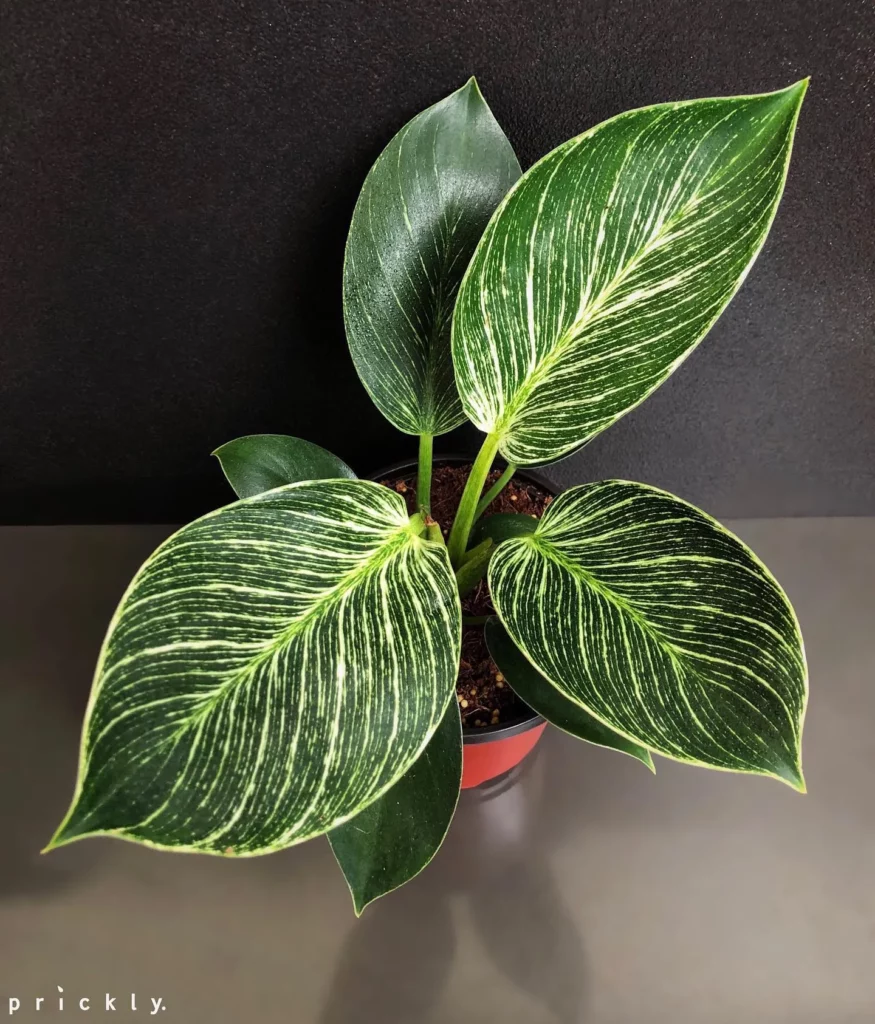

When it comes to caring for your Philodendron Birkin, it’s important to be aware of common pests and diseases that can affect its health. Two common pests that you may encounter are spider mites and thrips. Spider mites are tiny creatures that feed on the plant’s sap, leading to dry leaves that eventually fall off. Thrips, on the other hand, cause pale and splotchy leaves.
If you notice these pests on your Philodendron Birkin, don’t worry! There are effective ways to manage them. Begin by manually removing the pests from the leaves, and then treat the plant with insecticidal soap or a mild insecticide. This will help eliminate the pests and protect the health of your plant.
Another common issue to watch out for is root rot, which can occur if the plant is overwatered or the soil doesn’t have proper drainage. To prevent root rot, make sure to water your Philodendron Birkin appropriately and ensure that the soil has good drainage. Regularly inspecting the plant’s roots and soil can help you catch and address any signs of root rot early on.
Lastly, bacterial leaf spot is a common disease that can affect Philodendron Birkin. This disease causes dark spots to develop on the leaves, compromising the plant’s overall appearance. To prevent bacterial leaf spot, avoid getting water on the leaves when watering and make sure the plant is in a well-ventilated area with good air circulation. If you do notice any signs of this disease, promptly remove affected leaves to prevent its spread.
Additional Philodendron Birkin Care Tips



To ensure the optimal growth and health of your Philodendron Birkin, there are a few additional care tips you can follow. One important factor to consider is humidity. Philodendron Birkin thrives in a humid environment, so increasing humidity levels can greatly benefit the plant. You can do this by misting the leaves regularly or grouping the plant with other humidity-loving plants.
Although Philodendron Birkin is a non-vining plant, it can still benefit from some support. To prevent the plant from becoming top-heavy, you can provide it with a moss pole or other types of support. This will help the plant maintain its upright growth and prevent it from leaning or toppling over.
Lastly, regular care and attention are crucial for the overall well-being of your Philodendron Birkin. It’s important to regularly check the plant for any signs of health issues, such as yellowing or browning leaves, and address them promptly. Providing optimal growing conditions, including proper lighting, watering, and fertilization, will also contribute to its thriving. Remember to give your Philodendron Birkin the care and attention it deserves, and it will reward you with its beautiful foliage.
Conclusion
Firstly, providing bright, indirect light is crucial for the Philodendron Birkin’s well-being. Place it near a window with filtered sunlight, or use curtains to diffuse direct sunlight.
Secondly, maintaining the right moisture levels in the soil is essential. Water your Philodendron Birkin regularly, allowing the top inch of soil to dry out between waterings. Avoid overwatering, as it can lead to root rot and other issues.
Lastly, fertilize your Philodendron Birkin every 2-4 weeks during the growing season. Use an organic or water-soluble fertilizer with a balanced ratio, such as 10-10-10, to provide essential nutrients for healthy growth.
By consistently following these care tips and addressing any issues promptly, you can enjoy the beauty of your Philodendron Birkin for years to come. Take pride in your indoor garden space and watch as your Philodendron Birkin flourishes with your care and attention.
FAQ
How do I care for a Philodendron Birkin?
To care for a Philodendron Birkin, provide bright, indirect light, keep the soil moist but allow it to dry out between waterings, maintain a mild and slightly humid environment, and fertilize regularly with organic or water-soluble fertilizer.
Can I propagate a Philodendron Birkin?
Yes, you can propagate a Philodendron Birkin through stem cuttings in water or soil. After 6-8 weeks in water, transfer the cuttings to a pot with potting mix or plant them directly in soil.
How often should I water my Philodendron Birkin?
Water your Philodendron Birkin once a week, allowing the top inch of soil to dry out between waterings.
What kind of light does a Philodendron Birkin need?
Philodendron Birkin needs bright, indirect sunlight for about 12 hours a day.
Do I need to prune my Philodendron Birkin?
Pruning is generally unnecessary for a Philodendron Birkin unless there are dead or damaged leaves.
How often should I fertilize my Philodendron Birkin?
Fertilize your Philodendron Birkin every 2-4 weeks during the spring and summer with organic compost or water-soluble fertilizer.
When should I repot my Philodendron Birkin?
Repot your Philodendron Birkin every 1-2 years or when it becomes rootbound. Use a pot that is 2.5-5cm larger than its current pot size.
Why are the leaves of my Philodendron Birkin turning yellow?
Yellowing leaves at the bottom of the plant are a natural part of its lifecycle. However, yellow leaves higher up may indicate overwatering.
What are common pests that can affect Philodendron Birkin?
Common pests that can affect Philodendron Birkin include spider mites and thrips.
How can I increase humidity for my Philodendron Birkin?
You can increase humidity for your Philodendron Birkin by misting the plant or grouping it with other plants.

